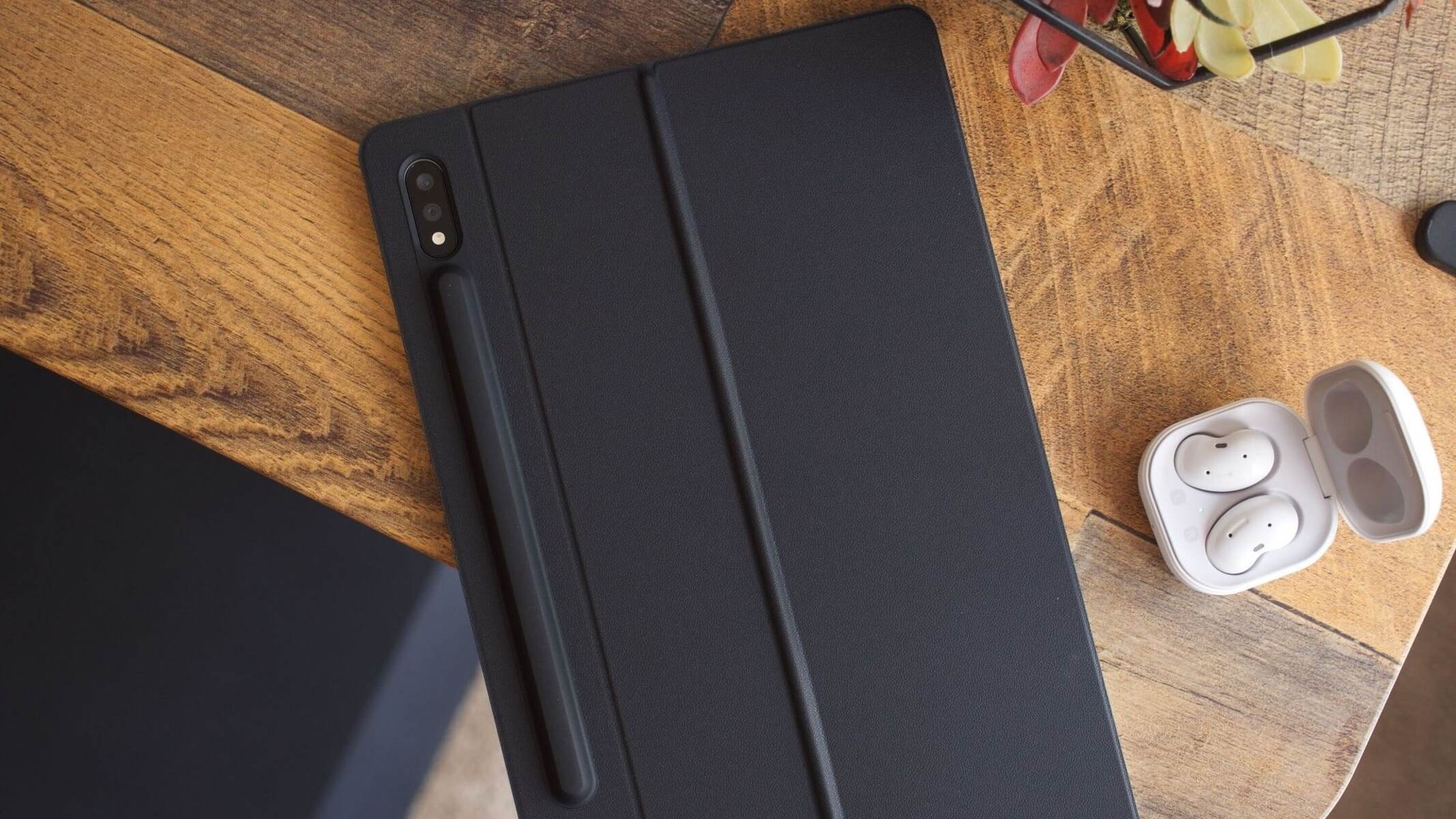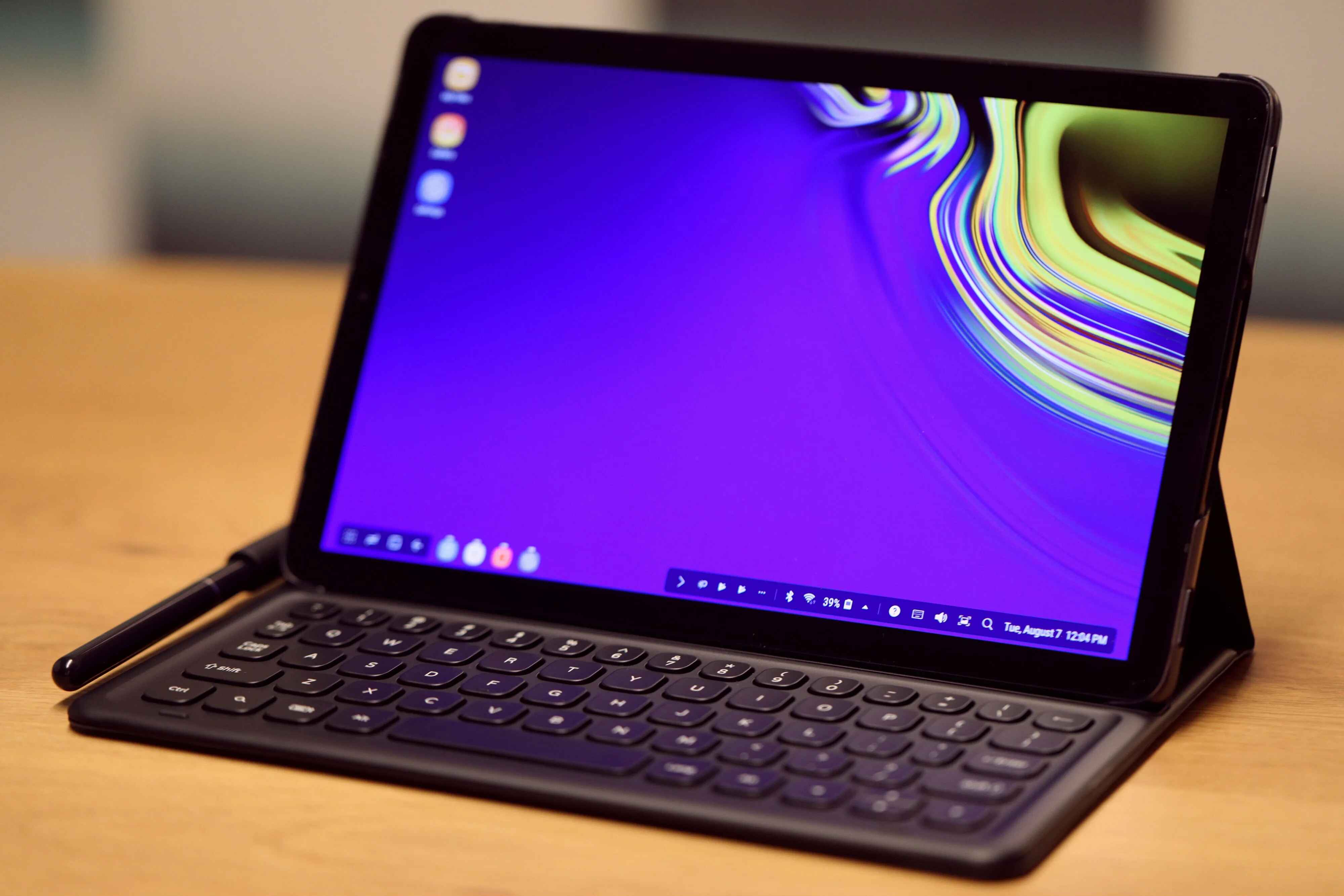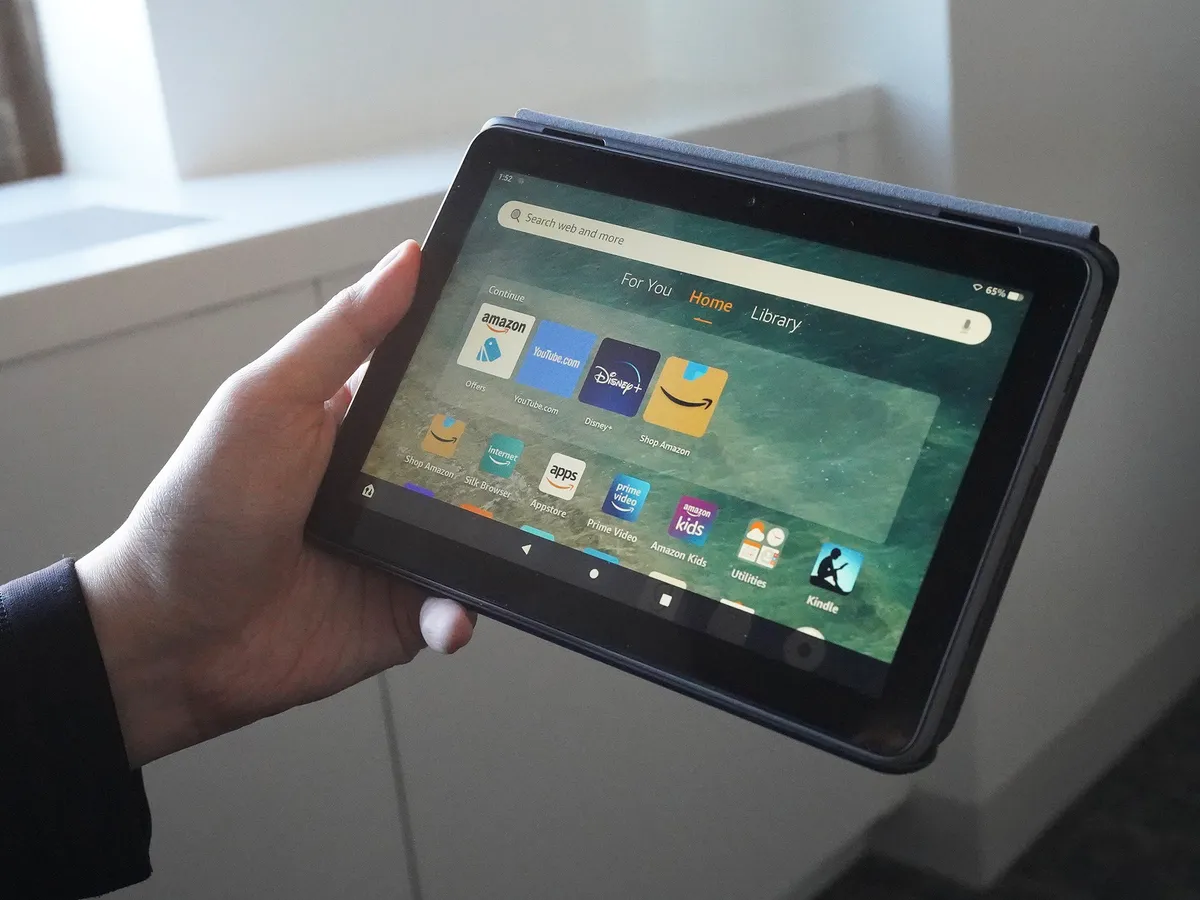Introduction
Welcome to this comprehensive guide on how to root your Samsung Galaxy Tab A 8.0 without using a computer. Rooting your device can unlock a world of possibilities, giving you greater control and customization options. By gaining root access, you can install custom ROMs, remove bloatware, and optimize performance, among other benefits.
Before proceeding with the rooting process, it’s important to understand that rooting your device will void its warranty and can potentially lead to unintended consequences if not done correctly. It’s crucial to follow the steps outlined in this guide carefully and understand the risks involved.
In this guide, we will walk you through the necessary steps to root your Samsung Galaxy Tab A 8.0 without using a computer. We will cover the prerequisites, enabling developer options, enabling USB debugging, and enabling OEM unlocking. Additionally, we will guide you through the process of downloading the required files, installing the KingoRoot APK, rooting your device, and verifying root access.
It is vital to note that rooting your device comes with both benefits and risks. On the positive side, rooting allows you to fully customize your device, access advanced features, and optimize performance. On the other hand, improper rooting can result in voided warranty, bricked devices, security vulnerabilities, and potential data loss. Therefore, it is essential to exercise caution and take full responsibility for any consequences that may arise from rooting your Samsung Galaxy Tab A 8.0.
Please ensure that you have a good understanding of the process and its implications before proceeding. Now, let’s dive in and get started with rooting your Samsung Galaxy Tab A 8.0 without using a computer!
Preparing Your Device
Before you begin the rooting process, it’s important to prepare your Samsung Galaxy Tab A 8.0 to ensure a smooth and successful procedure. Here are the steps you need to follow:
- Backup your data: Rooting your device can potentially lead to data loss. Therefore, it’s crucial to back up all your important files, contacts, photos, and any other data you don’t want to lose. You can choose to back up your data using the built-in backup feature of your device or by transferring it to an external storage device.
- Charge your device: Make sure that your device has a sufficient amount of battery charge before starting the rooting process. Ideally, it should be at least 50% charged to avoid any interruptions or battery-related issues during the procedure.
- Enable USB debugging: In order to connect your device to a computer and enable the necessary debugging options, you need to enable USB debugging. We will guide you through the process of enabling USB debugging in the next section.
- Unlock your bootloader (optional): If your device has a locked bootloader, you may need to unlock it before proceeding with the rooting process. Unlocking the bootloader is device-specific, and it may void your warranty. Refer to the specific instructions for your device model to unlock the bootloader, if needed.
By following these preparatory steps, you can ensure that your Samsung Galaxy Tab A 8.0 is ready for the rooting process. Remember to back up your data and charge your device adequately to avoid any potential issues. Once you’ve completed these preparations, you can move on to the next steps, which involve enabling developer options, enabling USB debugging, and enabling OEM unlocking.
Enabling Developer Options
Before you can enable USB debugging and OEM unlocking on your Samsung Galaxy Tab A 8.0, you first need to enable the hidden Developer Options menu. Here’s how you can do it:
- Open the Settings app on your device. You can swipe down from the top of the screen and tap the gear icon in the top right corner, or you can find the Settings app in your app drawer.
- Scroll down and tap on “About Tablet” or “About Device.” Note that the exact wording may vary depending on your device’s software version.
- Look for the “Build number” entry and tap on it seven times in quick succession. You will see a notification that says “You are now a developer!” This means that you’ve successfully unlocked the Developer Options menu.
- Go back to the main settings screen, and you’ll now see a new option called “Developer Options” listed above or below the “About Tablet” or “About Device” option.
- Tap on “Developer Options” to open the menu.
That’s it! You have now successfully enabled the Developer Options menu on your Samsung Galaxy Tab A 8.0. This menu contains various advanced settings and options that are primarily intended for developers, but it also includes the necessary options for rooting your device.
In the next section, we will guide you through the process of enabling USB debugging, which is a crucial step in the rooting process. USB debugging allows your device to communicate with a computer and lets you transfer data and execute commands between the two devices.
Note: Remember that the Developer Options menu should be used with caution, as some settings can have unintended consequences. Only modify the options if you have a good understanding of their effects.
Enabling USB Debugging
Once you have enabled the Developer Options menu on your Samsung Galaxy Tab A 8.0, the next step is to enable USB debugging. USB debugging allows you to establish a direct connection between your device and a computer, enabling the transfer of data and execution of commands. Here’s how you can enable USB debugging:
- Open the Settings app on your device.
- Scroll down and tap on “Developer Options.” If you can’t find the Developer Options menu, refer to the previous section on how to enable it.
- Scroll down until you find the “USB debugging” option and toggle the switch to turn it on. A popup will appear warning you about the potential risks of enabling USB debugging. Read it carefully and tap “OK” to proceed.
- Connect your device to a computer using a USB cable. Make sure the cable is properly connected and that both devices are recognized by each other.
- On your device, you may see a “Allow USB debugging?” prompt. Check the “Always allow from this computer” option and tap “OK” to confirm. This step is necessary to establish a trusted connection between your device and the computer.
Congratulations! You have successfully enabled USB debugging on your Samsung Galaxy Tab A 8.0. You can now proceed to the next steps, which involve downloading the required files and installing the KingoRoot APK on your device.
It’s important to note that USB debugging should be used with caution, as it grants full access to your device’s system. Be sure to only connect your device to trusted computers and only enable USB debugging when necessary.
Enabling OEM Unlocking
Before you can proceed with the rooting process on your Samsung Galaxy Tab A 8.0, you need to enable the OEM unlocking option in the Developer Options menu. OEM unlocking allows you to unlock the bootloader of your device, which is necessary for root access. Here’s how you can enable OEM unlocking:
- Open the Settings app on your device.
- Scroll down and tap on “Developer Options.” If you can’t find the Developer Options menu, refer to the previous section on how to enable it.
- Scroll down until you find the “OEM unlocking” option and toggle the switch to turn it on. You may be prompted to enter your device’s lock screen PIN, pattern, or password to confirm your action.
- A warning message will appear, informing you about the potential risks of enabling OEM unlocking. Read it carefully and make sure you understand the implications.
- Tap “Enable” or “Enable OEM unlocking” to confirm your decision. Your device’s bootloader is now unlocked, allowing you to proceed with the rooting process.
Enabling OEM unlocking is a critical step in the rooting process, as it grants access to the bootloader. However, it’s important to note that unlocking the bootloader will void your device’s warranty, and it may also lead to security risks if not done correctly.
Now that you have successfully enabled OEM unlocking on your Samsung Galaxy Tab A 8.0, you can move on to the next steps, which involve downloading the required files and installing the KingoRoot APK on your device.
Remember to proceed with caution and always follow the instructions carefully to minimize the risks associated with unlocking the bootloader.
Downloading Required Files
Before you can root your Samsung Galaxy Tab A 8.0, you’ll need to download the necessary files to facilitate the process. Here’s what you need to do:
- Open a web browser on your device and navigate to the official website of KingoRoot.
- Look for the download section on the website and locate the KingoRoot APK file for Android. Ensure that you download the latest version of the APK file to ensure compatibility and access to the latest features and security enhancements.
- Tap on the download link for the KingoRoot APK file. Your device may display a warning about the risks of installing apps from unknown sources, as the APK file is not downloaded from the Google Play Store. Read the warning carefully and tap “OK” to proceed with the download.
- Once the APK file has finished downloading, locate it in your device’s file manager or downloads folder. Tap on the APK file to initiate the installation process.
- Before installing the KingoRoot APK, your device may prompt you to enable the “Install unknown apps” permission for the file manager or web browser app you are using. Follow the on-screen prompts to grant the necessary permission.
- Once the permission is enabled, proceed with the installation by following the prompts on your device’s screen. You may be asked to review the permissions requested by the KingoRoot app and confirm your acceptance.
- After the installation is complete, you’ll have the KingoRoot app installed on your device, ready to be used for the rooting process.
Downloading the required files, such as the KingoRoot APK, is a crucial step in preparing your device for the rooting process. With these files downloaded and the KingoRoot app installed, you’re now ready to proceed with rooting your Samsung Galaxy Tab A 8.0. We’ll guide you through the rooting process in the next sections.
Make sure to download files from trusted sources to ensure their authenticity and avoid potential malware or security risks. Additionally, keep in mind that rooting your device carries certain risks, so proceed carefully and at your own discretion.
Installing KingoRoot APK
Now that you have downloaded the KingoRoot APK file, it’s time to install the app on your Samsung Galaxy Tab A 8.0. The KingoRoot app will assist you in rooting your device. Follow the steps below to install KingoRoot:
- Open the file manager or navigate to the location where you downloaded the KingoRoot APK file.
- Tap on the APK file to begin the installation process. Your device may display a warning regarding the installation of apps from unknown sources. To proceed, tap on the “Install” option.
- While the app is being installed, your device may display a progress bar indicating the installation progress. It usually takes only a few seconds to complete.
- Once the installation is complete, you will see a notification confirming that KingoRoot has been successfully installed on your device.
Congratulations! You have now successfully installed KingoRoot on your Samsung Galaxy Tab A 8.0. The app is now ready to assist you in rooting your device. In the next section, we will guide you step-by-step through the rooting process using KingoRoot.
It’s important to note that KingoRoot is a trusted and reliable rooting tool. However, rooting your device carries certain risks, so proceed with caution and at your own discretion. Be sure to read and understand all the instructions before proceeding with the rooting process.
If you encounter any issues during the installation of KingoRoot or have any concerns about the app’s compatibility with your device, refer to the official KingoRoot website or seek guidance from trusted online sources or forums.
Rooting Your Device
Now that you have KingoRoot installed on your Samsung Galaxy Tab A 8.0, you’re ready to start the rooting process. Follow the steps below to root your device:
- Launch the KingoRoot app on your device by tapping on its icon in the app drawer.
- Once the app opens, you will see a simple and user-friendly interface with a “Root” button in the center. Tap on the “Root” button to initiate the rooting process.
- During the rooting process, the KingoRoot app will start working to gain root access on your device. You may see a progress bar indicating the status of the process.
- It’s essential to be patient during this stage, as the rooting process may take some time to complete. It’s crucial not to interrupt or disconnect your device from the power source during this process.
- Once the rooting process is complete, you will see a success message on your screen. This means that your Samsung Galaxy Tab A 8.0 has been successfully rooted.
Congratulations! You have successfully rooted your Samsung Galaxy Tab A 8.0 using KingoRoot. With root access, you now have the ability to customize your device, optimize performance, and install apps that require root permissions.
It’s important to note that rooting your device voids its warranty, and you should proceed with caution. Make sure you understand the risks involved and only install trusted apps and modifications from reputable sources. Additionally, bear in mind that incorrectly modifying system files or settings can lead to instability or even bricking your device. Take the necessary precautions and research any modifications before implementing them.
In the next section, we will guide you on how to verify root access on your Samsung Galaxy Tab A 8.0, ensuring that the rooting process was successful.
Verifying Root Access
After successfully rooting your Samsung Galaxy Tab A 8.0 using KingoRoot, it’s important to verify that you have gained root access. Verifying root access ensures that the rooting process was successful and your device is now ready for advanced customization. Here’s how you can check for root access on your device:
- Launch the Google Play Store on your device.
- In the search bar, type “Root Checker” and look for the app with the same name.
- Tap on the “Root Checker” app to access its download page.
- Tap the “Install” button to download and install the Root Checker app on your device.
- Once the installation is complete, open the Root Checker app.
- You will be greeted with a simple interface. Tap on the “Verify Root” button to start the verification process.
- The app will check for root access on your Samsung Galaxy Tab A 8.0. If root access has been successfully granted, you will see a message confirming that your device has root privileges.
Congratulations! You have now verified that your Samsung Galaxy Tab A 8.0 has root access. This means that you have full control over the device’s system and can make advanced customizations and optimizations.
If the Root Checker app indicates that root access is not granted, you may need to repeat the rooting process using KingoRoot or explore alternative rooting methods specific to your device model.
Remember, with root access comes great responsibility. Be cautious when making any system-level changes and ensure that you only install trusted apps and modifications from reputable sources. Improper modifications can lead to device instability or other issues. It’s always a good idea to research any modifications thoroughly before implementing them.
In the next section, we will provide some troubleshooting tips to help you address any potential issues you may encounter during the rooting process.
Troubleshooting Tips
While rooting your Samsung Galaxy Tab A 8.0 can be a relatively straightforward process, you may encounter some issues along the way. Here are some troubleshooting tips to help you address common problems:
- Device not recognized: If your device is not being recognized by the KingoRoot app or your computer, ensure that you have enabled USB debugging and have installed the necessary drivers on your computer. You can try using a different USB cable or port to establish a connection.
- Stuck in bootloop: If your device gets stuck in a bootloop after rooting, you can try booting into recovery mode and performing a factory reset. Be aware that a factory reset will erase all data on your device, so ensure that you have a backup beforehand.
- Rooting unsuccessful: If the rooting process using KingoRoot is unsuccessful, try restarting your device and attempting the process again. You can also try using alternative rooting methods or seeking assistance from forums or online communities dedicated to your specific device model.
- Apps not working correctly: After rooting, certain apps that rely on security measures may not function correctly. In such cases, you can try hiding root access by using apps like Magisk Hide or RootCloak. These apps can mask your device’s root status from specific apps that might be incompatible with rooted devices.
- Bricked device: In rare instances, improper rooting procedures may result in a bricked device. A bricked device is essentially unusable and may require professional assistance to recover. To avoid this, it’s crucial to carefully follow the instructions provided by reputable sources and double-check compatibility with your specific device model.
Remember, rooting your device carries risks, and it’s important to take the necessary precautions and proceed with caution. Always research and understand the steps involved in the rooting process, and be aware that any modifications or changes made to your device’s system can have unintended consequences.
If you encounter any difficulties during the rooting process or face specific issues not covered in this guide, it is recommended to consult device-specific forums, online communities, or seek professional assistance to resolve the problem.
By following these troubleshooting tips, you can overcome common challenges that may arise during the rooting process and ensure a successful outcome.
Conclusion
Congratulations on successfully rooting your Samsung Galaxy Tab A 8.0! By following the step-by-step instructions in this guide, you have gained root access to your device, unlocking a world of possibilities for customization and optimization.
Rooting your device allows you to install custom ROMs, remove bloatware, optimize performance, and unleash the full potential of your Samsung Galaxy Tab A 8.0. However, it’s important to remember that rooting comes with certain risks, including voiding your warranty and potential security vulnerabilities.
Throughout this guide, we have covered the necessary preparatory steps, including backing up your data, ensuring sufficient battery charge, enabling Developer Options, enabling USB debugging, and enabling OEM unlocking. We also provided instructions for downloading the required files, installing the KingoRoot APK, rooting your device, verifying root access, and troubleshooting common issues.
Remember that rooting is not without its risks, and it’s essential to exercise caution and thoroughly research any modifications or changes you plan to make to your device. Always back up your data, follow trusted sources and instructions, and proceed at your own discretion.
If at any point you feel uncomfortable or uncertain about the rooting process, it’s best to seek guidance from reputable forums, online communities, or professionals who specialize in device rooting.
We hope this guide has been helpful in rooting your Samsung Galaxy Tab A 8.0 and that you enjoy the benefits of having root access on your device. Take advantage of the newfound flexibility and customization options that rooting provides, and make the most of your Android experience!

























